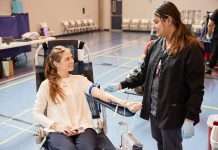Editor’s Note: April is National Child Abuse Prevention Month. We will be sharing a series of articles on the topic this month written by our contributing writer Tracy, an expert in this area.

Child abuse is any mistreatment of a child (under 18) by a parent or caregiver that results in harm or injury. It includes physical abuse, physical neglect, sexual abuse, and emotional abuse and neglect.
Who’s at risk
Child abuse occurs across all boundaries of economic levels, race, ethnic heritage, and religious faith. It can be a one-time occurrence, but more often it is a pattern of behavior involving regular physical attacks or acts of deprivation or molestation. The longer child abuse goes on, the more serious the consequences.
There are many reasons why a child may be abused or neglected. The caregiver may have low self-esteem, feel isolated, have mental health or physical health issues, or may be abusing drugs or alcohol. Caretakers may have low levels of tolerance for frustration, inadequate coping skills, misconceptions about what it means to be a parent or caretaker, misconceptions about appropriate discipline, or unrealistic expectations of children at different stages of development.
There are societal factors that play a role as well. There may be an increase in violence within the community they live, the caregiver may be experiencing stress associated with poverty, or there may be a lack of education.
These are the reasons that prevention is so important.
Current Statistics
According to the US Department of Health and Human Services, in federal fiscal year (FFY) 2017, about 4.1 million reports were made to child protective services for child abuse and neglect. An estimated 1,720 children died due to abuse or neglect. In California, there were 379,806 total reports made to child protective services for child abuse and neglect and there were 122 children who died from abuse and neglect.
A report of child abuse is made every 10 seconds.
These are just the cases that are reported to child protective services. Think about how many do not get reported.
Things you can do to prevent child abuse
Outside of being a mandated reporter, there are things you can do to prevent child abuse and report it if you suspect it. When children have strong, healthy relationships with nurturing adults, they become safer, stronger and happier. Positive adult-child connections are critical to keep children safe and nurture their growth and development. Kids with meaningful connections are more resilient in the face of daily life challenges and even more severe trauma.
So, ask yourself, are you a positive connection for all the children in your life? And what are you willing to do to make sure that you keep all the children in your life safe?
Make a pinwheel to show your support.
Just like all other worthy causes, child abuse prevention should be in our minds all year long, not just for one month. The blue pinwheel is the symbol for child abuse prevention. Think about creating your own pinwheels with your children to bring awareness of the issue and to create something to get the conversation started.
Uses this template to create your own pinwheels for prevention.
Information taken from the Child Welfare League of America, Childhelp, and the Child Welfare Information Gateway.



















